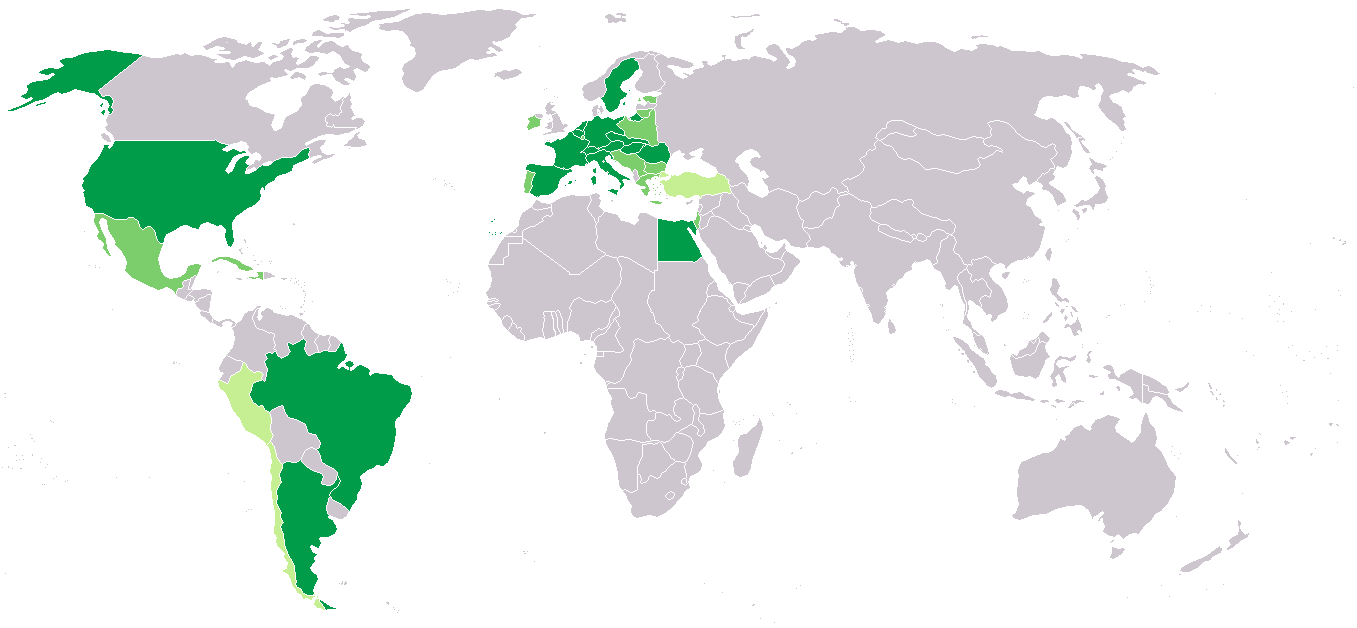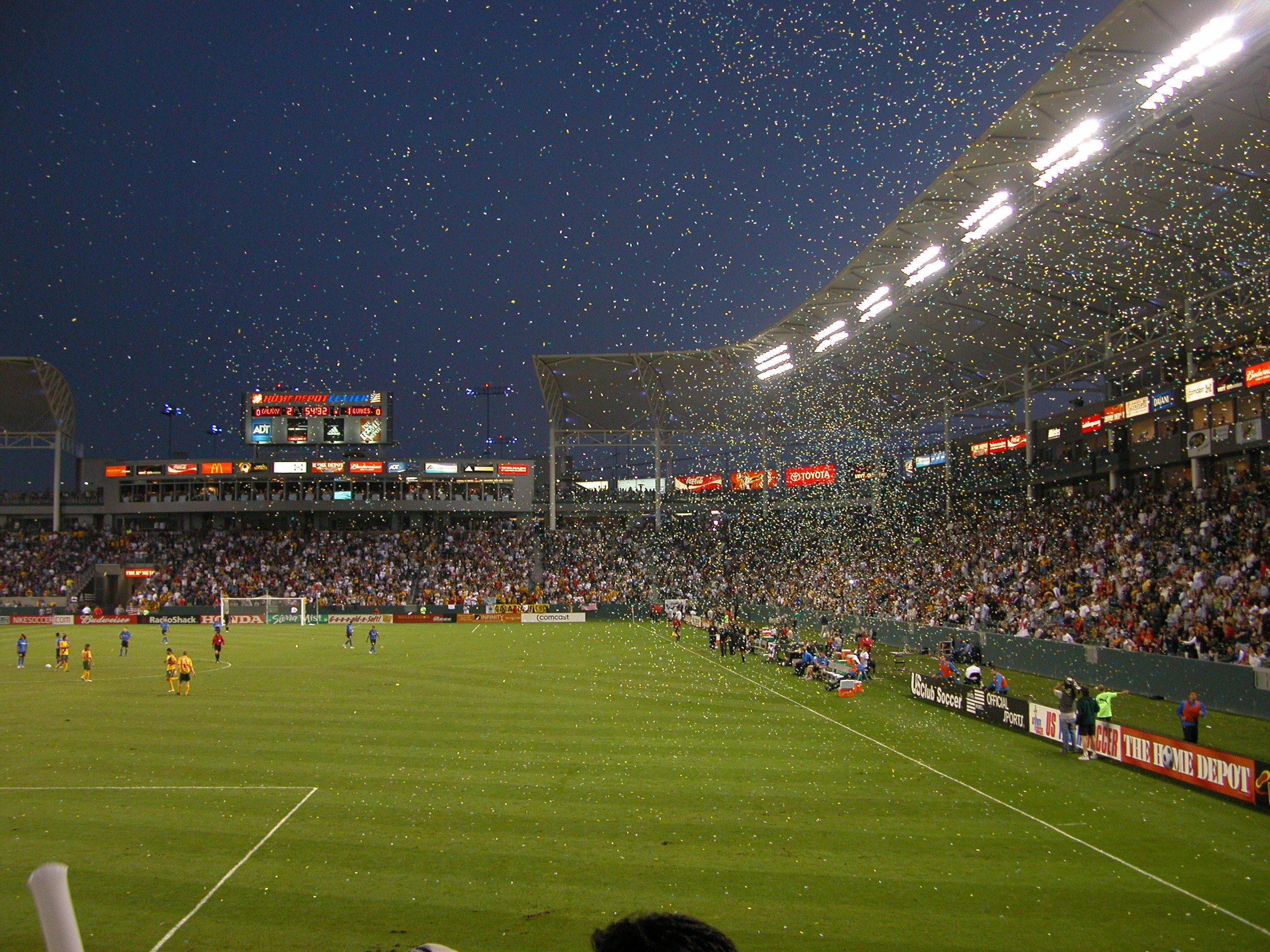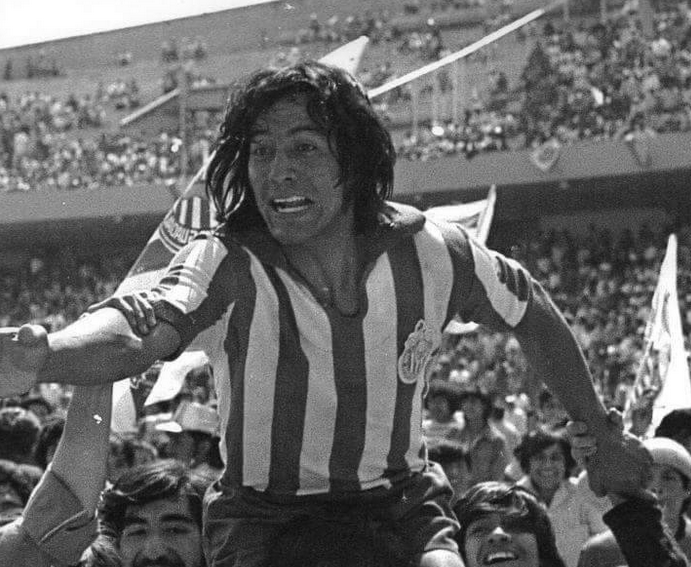|
Mexico–United States Soccer Rivalry
A sports rivalry exists between the national soccer teams of Mexico and the United States, widely considered the two major powers of CONCACAF. The first match was played in 1934, and the teams have met 75 times, with Mexico leading the overall series 36–17–22 (W–D–L). The U.S. holds the edge since 2000 though, with a 17–8–9 (W–D–L) advantage in the 21st century. Matches between the two nations often attract much media attention, public interest, and comment in both countries. The U.S.-Mexico matches are widely attended; several matches at the Estadio Azteca in Mexico have drawn over 100,000 fans, and several matches at the Rose Bowl in the United States have drawn over 90,000 fans. The most important matchups take place in quadrennial FIFA World Cup qualification matches and major tournaments such as the CONCACAF Gold Cup. The rivalry plays out often in annual friendlies scheduled during the early months in U.S. cities with large Mexican-American populations ... [...More Info...] [...Related Items...] OR: [Wikipedia] [Google] [Baidu] |
2022 FIFA World Cup Qualification (CONCACAF)
The North, Central American and Caribbean section of the 2022 FIFA World Cup qualification acted as the qualifiers for the 2022 FIFA World Cup, to be held in Qatar, for national teams which are members of the Confederation of North, Central American and Caribbean Association Football (CONCACAF). Three direct slots and one inter-confederation play-off slot in the final tournament were available for CONCACAF teams. Format Original format On 10 July 2019, CONCACAF announced a restructured qualifying format for the World Cup. After CONCACAF initially announced in March 2018 that they would use the CONCACAF Ranking Index to determine the seeding of CONCACAF teams for qualifying to international tournaments, it was determined that FIFA Rankings would be used instead. *Top-seeded Hexagonal group: The top 6 ranked CONCACAF teams based on the FIFA rankings of June 2020 were to play home-and-away round-robin matches in one single group (often referred to as the "Hexagonal"). The top thr ... [...More Info...] [...Related Items...] OR: [Wikipedia] [Google] [Baidu] |
1934 FIFA World Cup Qualification
The 1934 FIFA World Cup was the first World Cup for which teams had to qualify, after the finalists in the inaugural 1930 World Cup had participated by invitation from FIFA. With 32 teams having entered the 1934 competition, FIFA organized qualification rounds to select 16 teams for the finals. Even Italy, the host of the World Cup, had to earn its spot, the only time this has been the case. The previous champion Uruguay refused to defend its title because many European nations had declined to take part in the 1930 World Cup, held in Uruguay. Of the 32 teams which entered, * Chile, Peru and Turkey all withdrew before qualifying began. * Brazil and Argentina qualified without playing any matches owing to the withdrawal of their opponents. * The other 27 teams played at least one qualifying match. * Greece, Bulgaria and Poland withdrew partway through the planned schedule of qualifying matches. The first match, between Sweden and Estonia, took place in Stockholm on 11 June 1933 ... [...More Info...] [...Related Items...] OR: [Wikipedia] [Google] [Baidu] |
2009 CONCACAF Gold Cup
The 2009 CONCACAF Gold Cup was the tenth edition of the CONCACAF Gold Cup competition, and the twentieth soccer championship of North America, Central America and the Caribbean (CONCACAF). It was played from July 3 to 26, 2009 in the United States. This competition was the fourth tournament without guests from other confederations. Mexico won their fifth Gold Cup, and eighth CONCACAF Championship overall, after beating the United States 5–0 in the final. It was the second consecutive Gold Cup final and fourth overall to feature Mexico and the United States and the third won by Mexico. Qualified teams A total of 12 teams qualified for the tournament. Three berths were allocated to North America, five to Central America, and four to the Caribbean. Notes: Venues The set of thirteen venues—the largest number ever used to stage the Gold Cup—was announced on March 9. Squads Participating teams selected a squad of 23 players (including three goalkeepers), exce ... [...More Info...] [...Related Items...] OR: [Wikipedia] [Google] [Baidu] |
2007 CONCACAF Gold Cup Final
The 2007 CONCACAF Gold Cup Final was a soccer match that took place on June 24, 2007, at Soldier Field in Chicago, Illinois, United States, to determine the winner of the 2007 CONCACAF Gold Cup. The United States beat longtime rivals Mexico Mexico (Spanish: México), officially the United Mexican States, is a country in the southern portion of North America. It is bordered to the north by the United States; to the south and west by the Pacific Ocean; to the southeast by Guatema ... 2–1 to win the tournament. Route to the final Match References External links Official website 2007 CONCACAF Gold Cup CONCACAF Gold Cup finals CONCACAF Gold Cup Final CONCACAF Gold Cup Final United States men's national soccer team matches Mexico national football team matches Mexico–United States soccer rivalry Sports competitions in Chicago Soccer in Chicago CONCACAF Gold Cup Final CONCACAF Gold Cup Final 2000s in Chicago {{NorthAm-footy-competition-stub ... [...More Info...] [...Related Items...] OR: [Wikipedia] [Google] [Baidu] |
2007 CONCACAF Gold Cup
The 2007 CONCACAF Gold Cup was the ninth edition of the Gold Cup, the soccer championship of North America, Central America and the Caribbean (CONCACAF), and was won by the United States over Mexico. It was contested in the United States from June 6 to 24, 2007. This competition was the third overall edition of the tournament without guests (for the first time since 1993) from other confederations. As the winner, the United States represented CONCACAF at the 2009 FIFA Confederations Cup. Guadeloupe, an overseas department of France, is not a member of FIFA. Had they won the tournament, the runner-up would have taken their place. Qualified teams A total of 12 teams qualified for the tournament. Three berths were allocated to North America, five to Central America, and four to the Caribbean. Venues Squads The 12 national teams involved in the tournament were required to register a squad of 23 players; only players in these squads were eligible to take part in the to ... [...More Info...] [...Related Items...] OR: [Wikipedia] [Google] [Baidu] |
1998 CONCACAF Gold Cup
The 1998 CONCACAF Gold Cup was the fourth edition of the Gold Cup, the soccer championship of North America, Central America and the Caribbean (CONCACAF). The tournament was once again held in the United States, in Los Angeles, Miami, and Oakland. The format of the tournament changed from 1996: it was expanded to ten teams, with four in Group A and three each in Groups B and C. The top team in each group, plus the second place in Group A would advance to the semifinals. Brazil was invited again, and brought their senior team this time. Jamaica, getting ready for the 1998 World Cup, pulled the stunner of the first round. They did not originally qualify for the tournament, but Canada withdrew, granting them a spot. Jamaica then topped Group A over Brazil (they tied the South Americans 0–0). In the semi-finals, the United States beat Brazil, as Preki scored the lone goal and Kasey Keller preserved the clean sheet. The United States could not repeat that performance in fron ... [...More Info...] [...Related Items...] OR: [Wikipedia] [Google] [Baidu] |
1993 CONCACAF Gold Cup
The 1993 CONCACAF Gold Cup was the second edition of the Gold Cup, the soccer championship of North America, Central America and the Caribbean (CONCACAF). The format of the tournament stayed the same as in 1991: eight teams were broken up into two groups of four, with the top two in each group advancing to the semifinals. It was the first Gold Cup to be co-hosted; Group A was held in the United States (Dallas), and Group B in Mexico (Mexico City). The tournament was won by Mexico, who beat the US 4–0 in the final. Qualified teams Venues Squads The 8 national teams involved in the tournament were required to register a squad of 20 players; only players in these squads were eligible to take part in the tournament. Group stage Group A ---- ---- Group B ---- ---- Knockout stage Bracket Semi-finals ---- Third place match Costa Rica and Jamaica shared the third place. Final Statistics Goalscorers 11 goals * Zague 5 goals * Luis Miguel ... [...More Info...] [...Related Items...] OR: [Wikipedia] [Google] [Baidu] |
CONCACAF Championship
The CONCACAF Championship was an association football tournament that took place between 1963 and 1989. The competition is sometimes referred to as CONCACAF Campeonato de Naciones. The first Championship took place in 1963 and was CONCACAF's first organized tournament for national teams. The competition retained its tournament format and was played on a biennial basis for a decade. In 1973 the tournament became the qualifying tournament for the FIFA World Cup and was played on a quadrennial basis. The CONCACAF trophy was given to the team that ranked highest in the qualifying group. In 1985 and 1989, there was no host nation for the competition. The competition was discontinued in 1991 in favor of the CONCACAF Gold Cup. Tournament results ;Notes Debut of teams A total of 15 teams participated in the championship: Overall team records In this ranking 2 points are awarded for a win, 1 for a draw and 0 for a loss. As per statistical convention in football, matches decided ... [...More Info...] [...Related Items...] OR: [Wikipedia] [Google] [Baidu] |
CONCACAF Nations League
The CONCACAF Nations League ( es, Liga de Naciones CONCACAF, french: Ligue des Nations de la CONCACAF) is an international association football competition contested by the senior men's national teams of the member associations of CONCACAF, the regional governing body of North America. The tournament takes place on dates allocated for international friendlies on the FIFA International Match Calendar. A one-time qualifying tournament took place from September 2018 to March 2019 and the inaugural tournament began in September 2019. History and format The tournament was announced in November 2017. It is divided into three tiered leagues, A, B, and C, of four groups each, with promotion and relegation between the leagues based on finishing position within groups. The group winners of League A enter a four-team knockout competition to be crowned champion, while the group-winners of Leagues B and C are promoted to the next tier. In Leagues A and B, the four teams at the bottom of the g ... [...More Info...] [...Related Items...] OR: [Wikipedia] [Google] [Baidu] |
FIFA Confederations Cup
The FIFA Confederations Cup was an international association football tournament for men's national teams, held every four years by FIFA. It was contested by the holders of each of the six continental championships ( AFC, CAF, CONCACAF, CONMEBOL, OFC, and UEFA), along with the current FIFA World Cup holder and the host nation, to bring the number of teams up to eight. Between 2001 and 2017 (with an exception in 2003), the tournament was held in the country that would host the World Cup the following year, acting as a test event for the larger tournament. The last champions were Germany, who won the 2017 FIFA Confederations Cup by defeating Chile 1–0 in the final to win their first title. In March 2019, FIFA confirmed that the tournament would no longer be staged, with its slot replaced by an expansion of the FIFA Club World Cup, as well as the 2021 FIFA Arab Cup, as a prelude to the 2022 FIFA World Cup. History King Fahd Cup The tournament was originally organized by ... [...More Info...] [...Related Items...] OR: [Wikipedia] [Google] [Baidu] |






